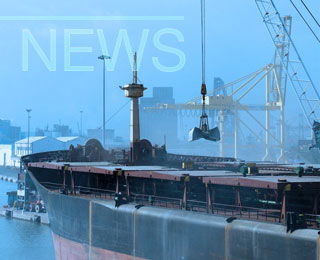In the first weeks of October, the Baltic Dry Index (BDI) climbed to 922 points, an improvement of almost 350 per cent on the levels recorded in February. The recent strengthening of the BDI may be a result of changes in the Chinese iron ore and coal markets. Following a government-mandated decrease in domestic production, imports of Australian and Indonesian coal rose by 35 and 56 per cent, respectively YoY in August, considerably supporting the capesize market. However, on 30 September the 276-day cap on Chinese coal production was lifted to 330 and with coal imports to China bound to drastically decrease again, the BDI can no longer rely on the Chinese demand for coal to supplement its growth.
Another factor to be considered is the potential introduction of new regulations from the International Maritime Organisation (IMO). The IMO Environmental Protection Committee was due to meet at the end of October to decide whether to reduce the sulphur content of bunker fuel from 3.5 to 0.5 per cent by 2020 or 2025. According to the IMO shipping contributes 13 per cent of the world’s SOx emissions. The EU and authorities in Shenzhen, China, have already mandated that the 0.5 per cent sulphur requirement will apply in 2020, regardless of IMO decisions.
A drop in oil prices has in turn lowered bunker fuel costs, which account for anywhere between 40-70 per cent of total ‘on-water’ operating expenses. Bunker prices were down approximately 50 per cent in 2016 compared to 2014, which certainly would have offered some relief to operators when the BDI plummeted earlier this year. But this relaxed price could be coming to an end as new IMO guidelines would see the fuel prices increase drastically, with potential price impact estimated between 44-100 per cent. While fuel costs may increase, this could prompt some much-needed demolitions. Reducing the oversupply of vessels will promote a stronger BDI and go a long way to achieving higher charter rates.
